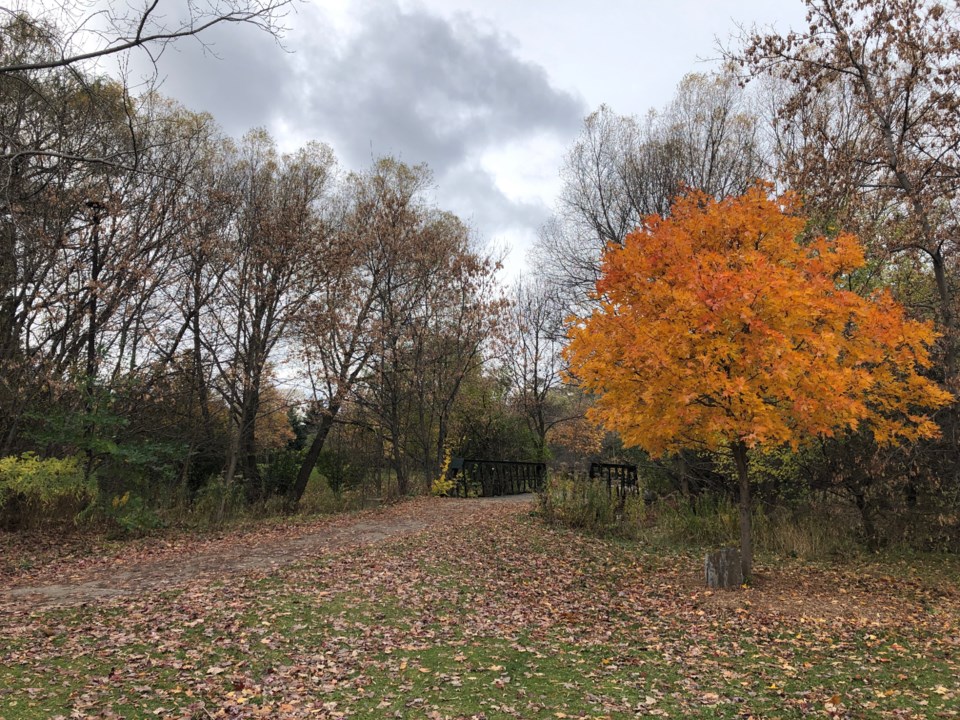Though money doesn’t grow on trees, the town’s towering trunks are working hard to supply more than $1 million in services to the municipality every year.
According to the proposed Urban Forest Management Plan - which has not yet been approved by council - the annual value of the ecological services provided by Collingwood’s urban forest canopy was $1.07 million in 2018.
The dollar value was calculated using programs from iTree, whose science and tools quantify the benefits and values of trees, according to the itreetools.org website. The science used for these calculations is peer-reviewed, United States Department of Agriculture Forest Service Research.
According to the iTree website, a tree’s benefit and value is its ability to remove pollutants from the area, absorb carbon dioxide, control storm water, enhance property values, lower summer air temperatures, provide wildlife habitat, and improve health and wellbeing.
An Ontario Health Study conducted on residents in Toronto by Chicago psychologist Marc Berman found planting 10 trees on a city block had the same effect on people’s health as a $10,200 raise or being seven years younger.
The Town of Collingwood has been working with consultants to develop the Urban Forest Management Plan for a little over a year. Work included inventories, studies, public engagement sessions, interviews with staff and research into the town's existing policies pertaining to tree protection and maintenance.
Consultants from Williams and Associates, McNeil Urban Forestry, and Kuntz Forestry Consulting prepared the plan for the town. In analyzing the town's existing strengths and weaknesses, the consultants noted the general public held trees in high regard, and wanted to see the town’s trees - on public and private lands - protected.
“Perhaps the single biggest opportunity identified is that Collingwood values its urban forest,” states the executive summary of the forest plan.
The plan, which will be presented to the Corporate and Community Services Standing Committee on Feb. 3, includes a list of more than 40 recommendations ranging from creating a new urban forestry unit and hiring a town forester, to diversifying the town’s tree inventory.
The highest priority recommendations aim to change the town’s reactive approach to the urban forest to one that is proactive, and that includes establishing a forestry unit and hiring a forester. Consultants recommend developing policies and bylaws such as a private tree management strategy and two tree preservation bylaws, one for private woodlands and one for private trees. Currently, the town’s bylaw covers both and the consultants called the document “broad” and difficult to enforce.
The plan also recommends the town add the “public tree” to its asset management strategy, recognizing a tree as “green infrastructure” that provides a public service just as a road or water line does.
On the same branch, the plan suggests the town should use its official plan review as an opportunity to develop and include new policies supporting urban forest.
More specifically, the plan states the town should be making a pruning cycle plan and sticking to it to ensure the town’s tree canopy is well-maintained. The plan also recommends shading policies that would see the town protect, plant, and maintain trees in areas where public congregates for the purpose of providing shade.
Development impacts and trees on private lands were prevalent topics in the forest plan, and both came up in the public sessions.
“Community engagement results found that those who participated in the survey were concerned about the loss of urban forest due to development and the few tools the town had to protect it,” states a staff report attached to the plan.
Two of the recommendations proposed suggest an updated subdivision agreement requiring Collingwood developers to submit tree and woodland inventories to the town, and provide an arborist report confirming all hazardous tree issues are dealt with.
Consultants also recommend the town review its development charges study to include compensation policies that would see developers contribute to the town’s tree planting budget.
Work on the plan included a high-level inventory of the town’s trees, including the species and state of them. The plan states the town’s tree inventory includes 9,078 trees and 11 genera (30 per cent of which are maple). Adding the shrub and thicket canopy, the total urban forest canopy in Collingwood measured 38.3 per cent of the town.
The consultants suggested the canopy should be more diverse with no genera making up more than 10 per cent of the canopy.
The town’s canopy is also about 12 per cent ash tree, and due to the presence of Emerald Ash Borer, a town staff report estimates most of them will be killed off resulting in a “devastating loss of trees and canopy cover.”
Further study led the consultants to summarize there are two Collingwood neighbourhoods along the coast of Georgian Bay where tree maintenance needs are moderate to high, and suggest the town should allocate added funds to address the issues.
According to a map included with the proposed plan, the neighbourhoods in most need of tree maintenance are the ones located along the waterfront at Pretty River Parkway and off Beachwood Road.
“We consider this situation to be an immediate public safety issue,” stated the consultants in the plan. “Lakeshore neighbourhoods have a higher volume of risk exposure due to sightline issues with cedar and dead and dying ash trees being more abundant than other neighbourhoods.”
A staff report estimates the ten-year costs for a forestry operating budget is about $1.77 million with another $500,000 in the first five years for equipment.
You can read the full Urban Forest Management Plan report here. The committee meeting where this report will be presented begins at 5 p.m. in the town hall council chambers and members of the public are given the opportunity to speak during the meeting.
